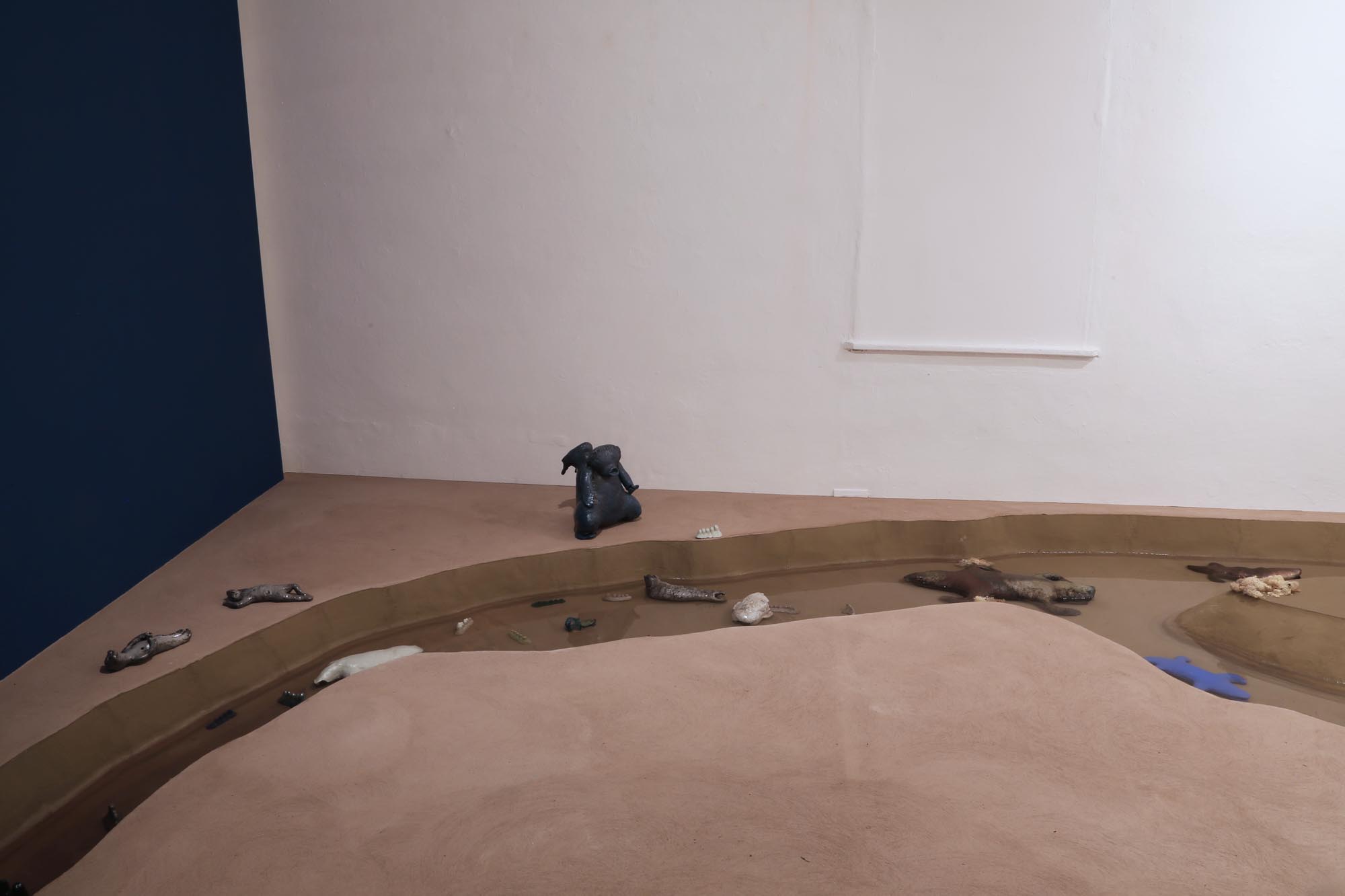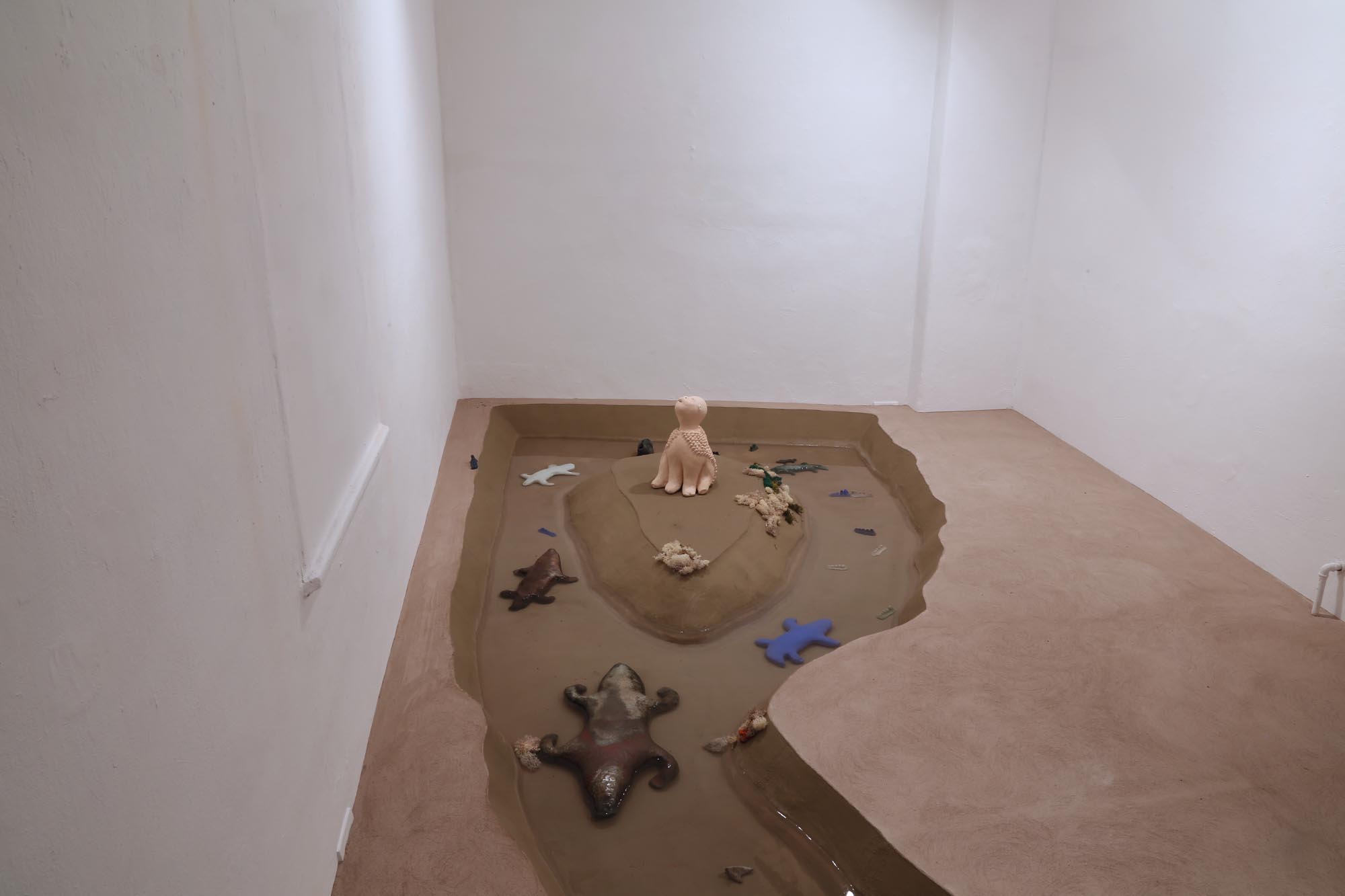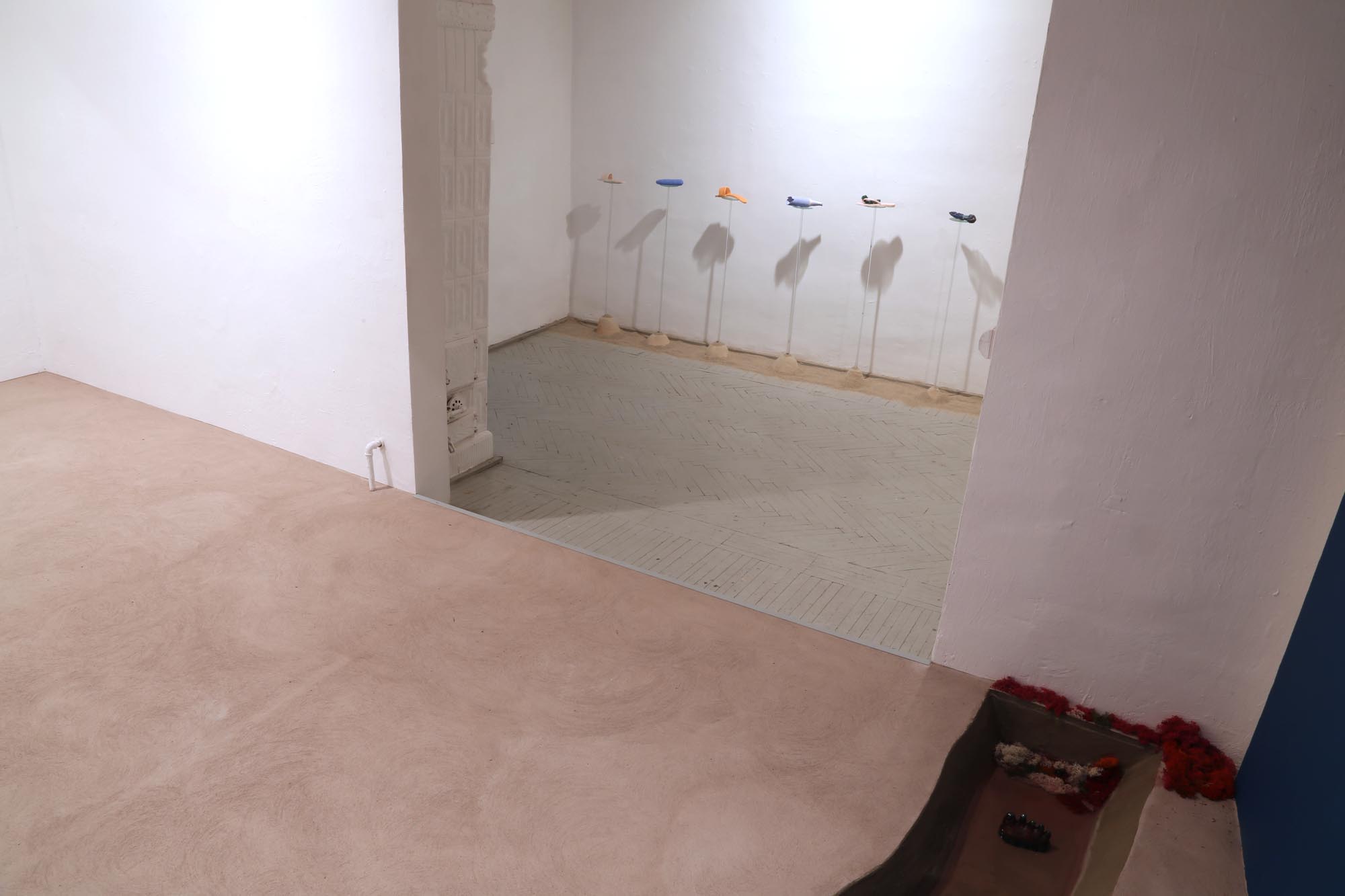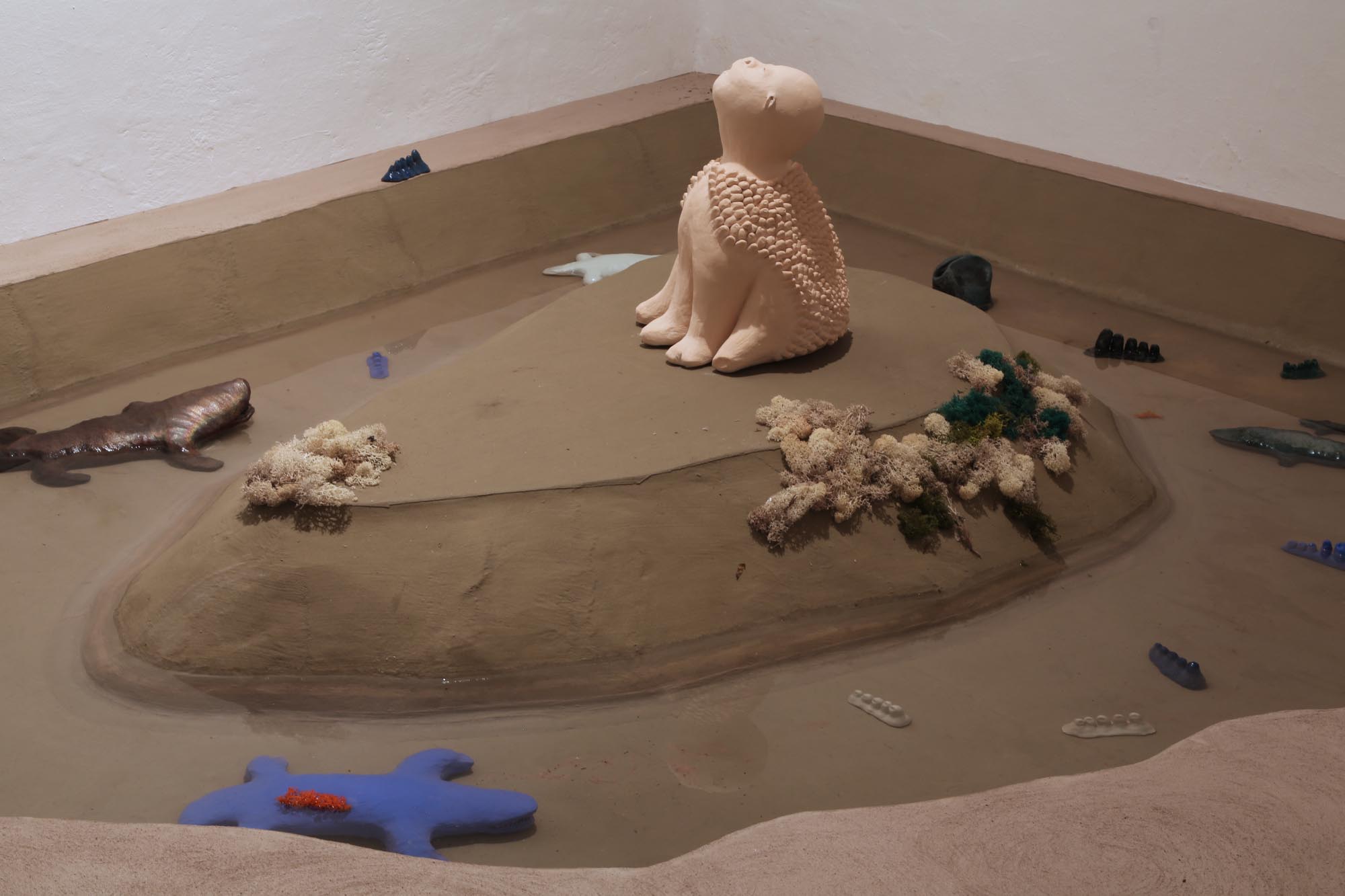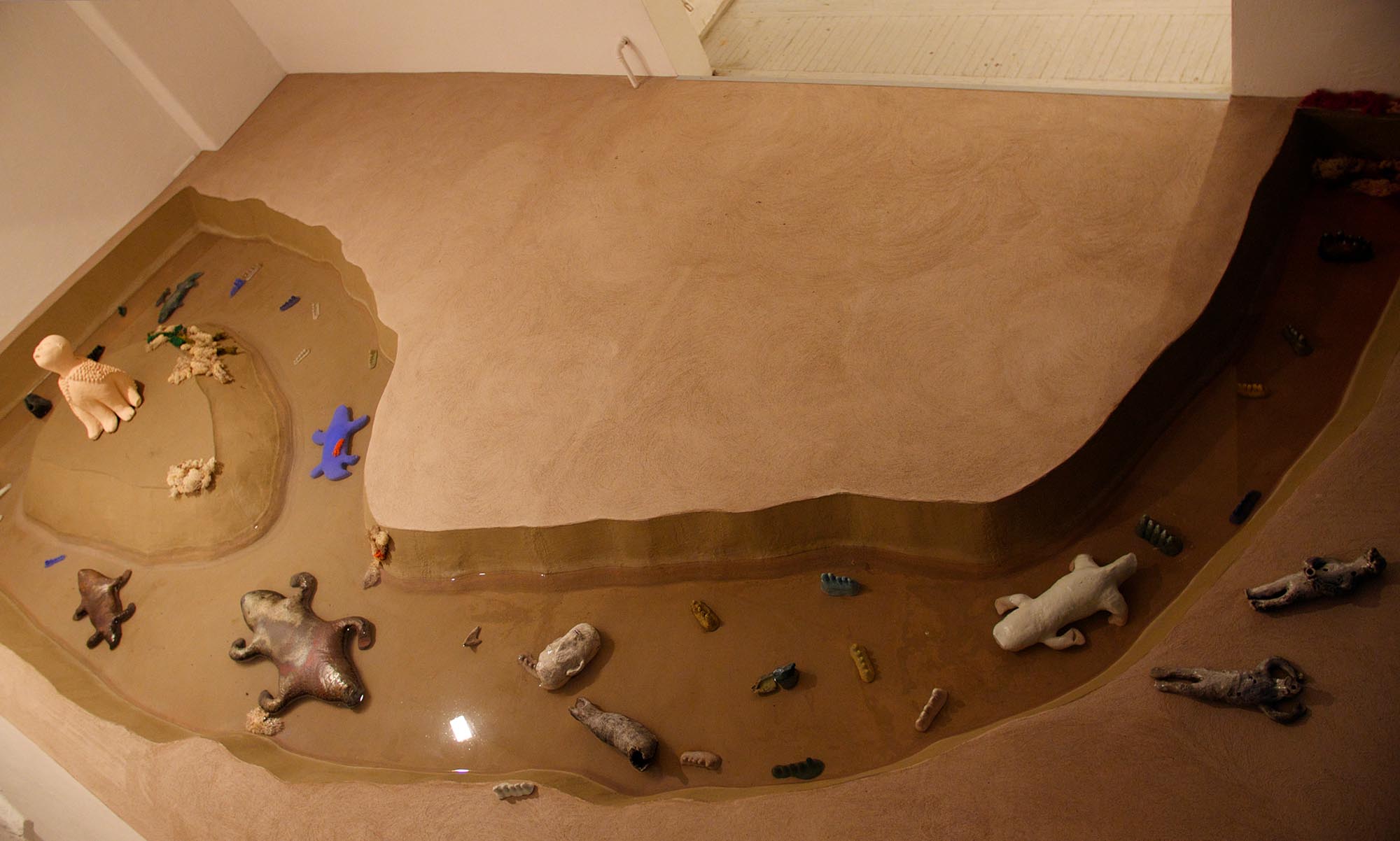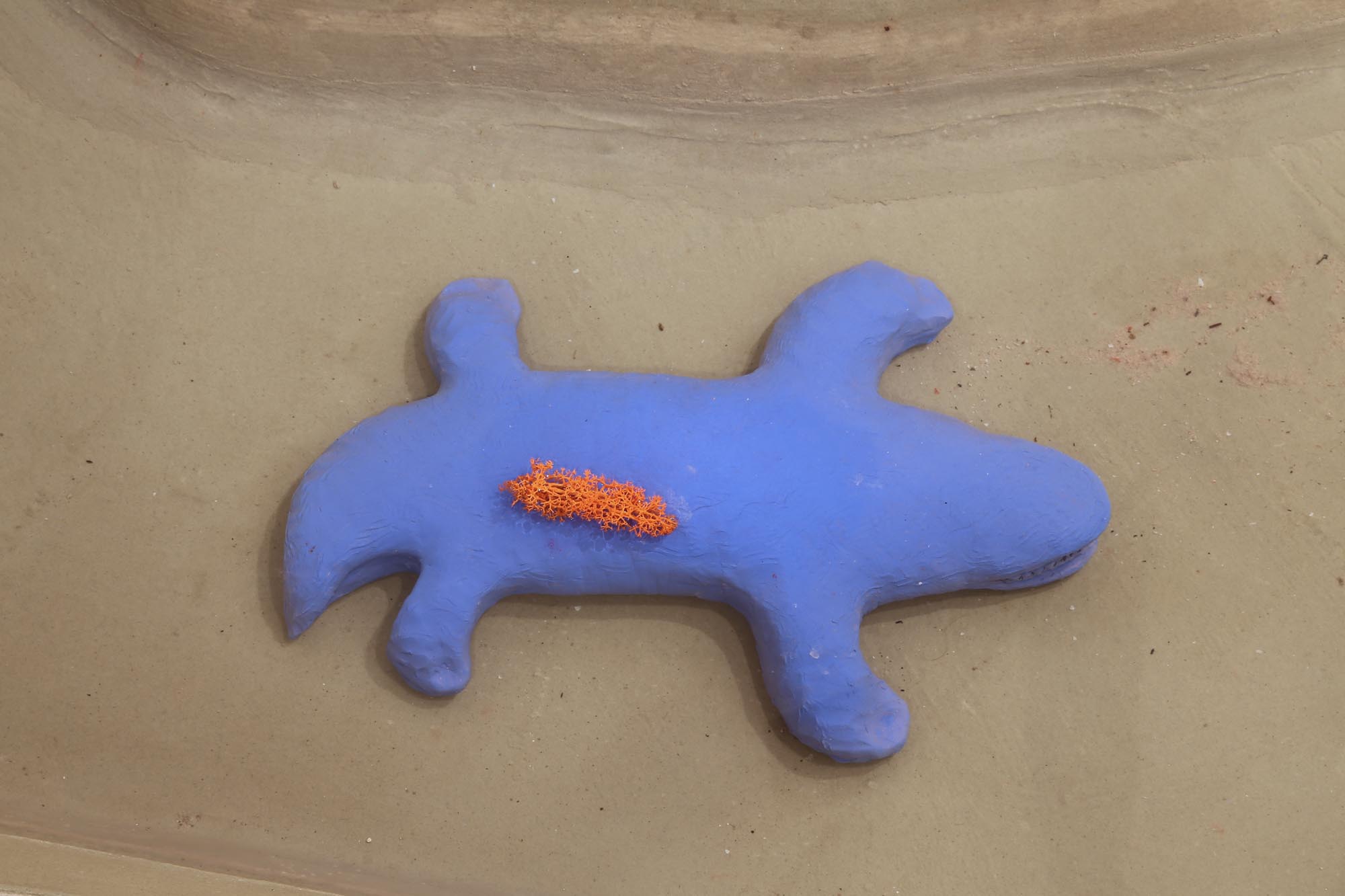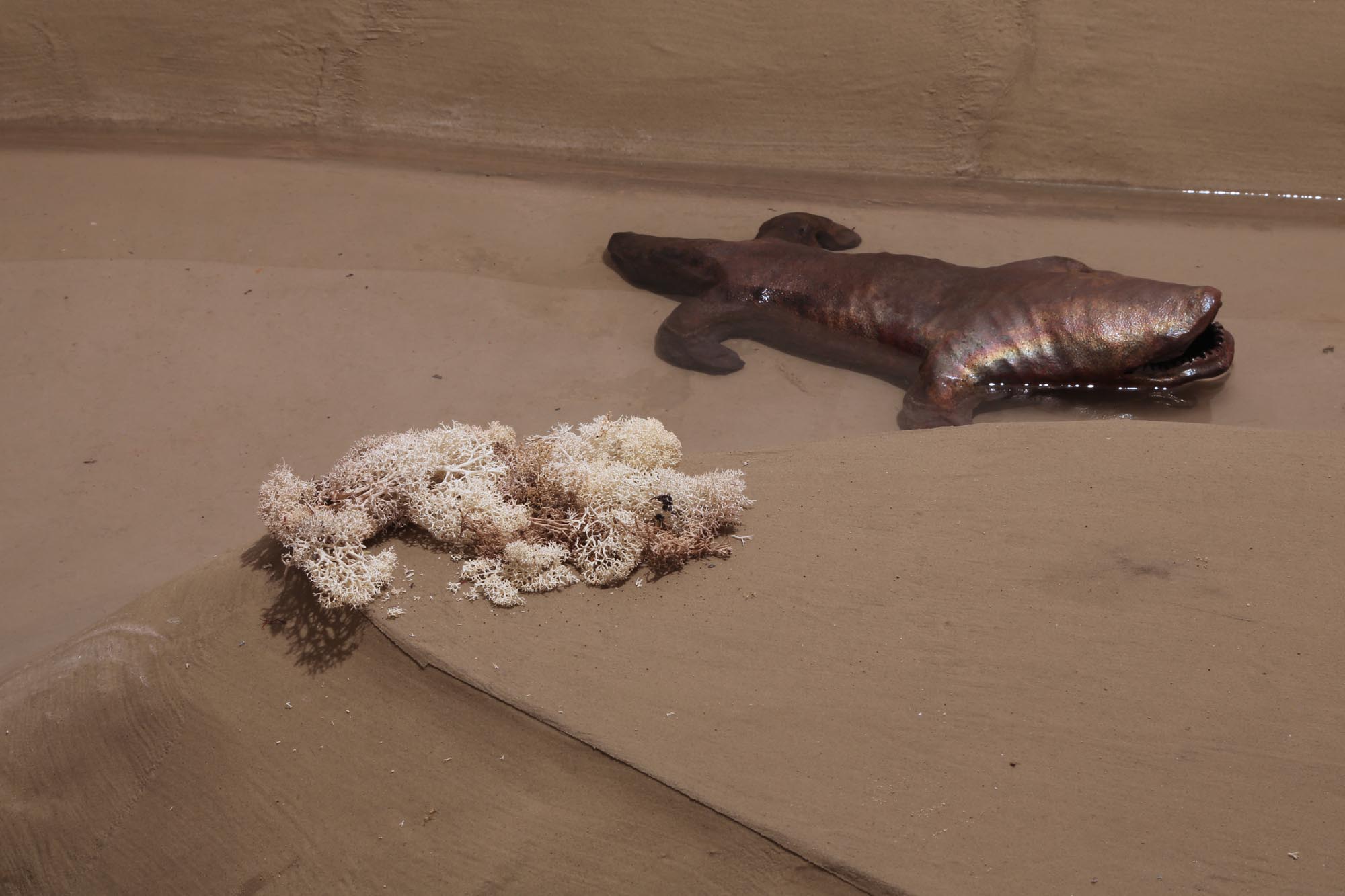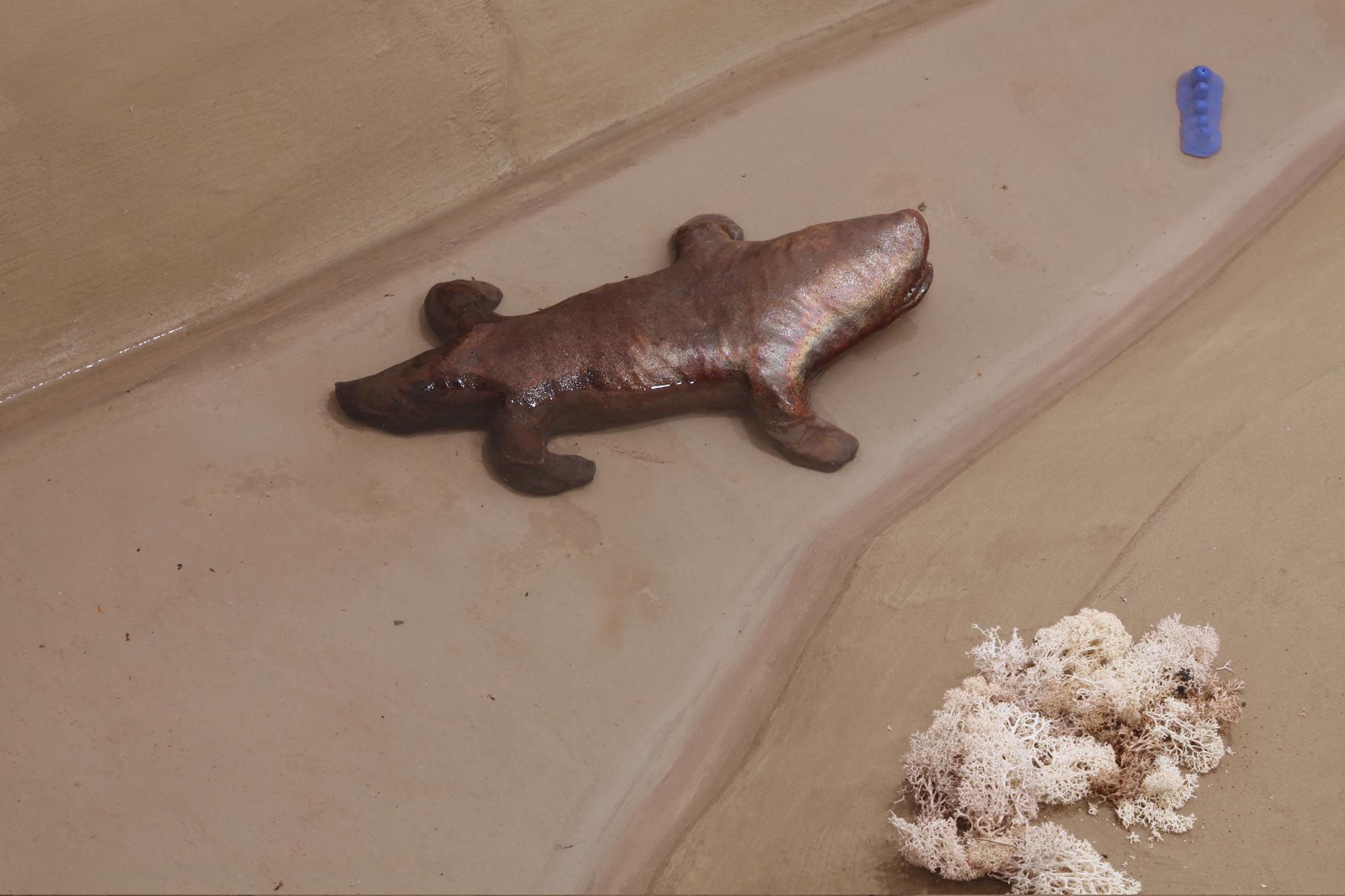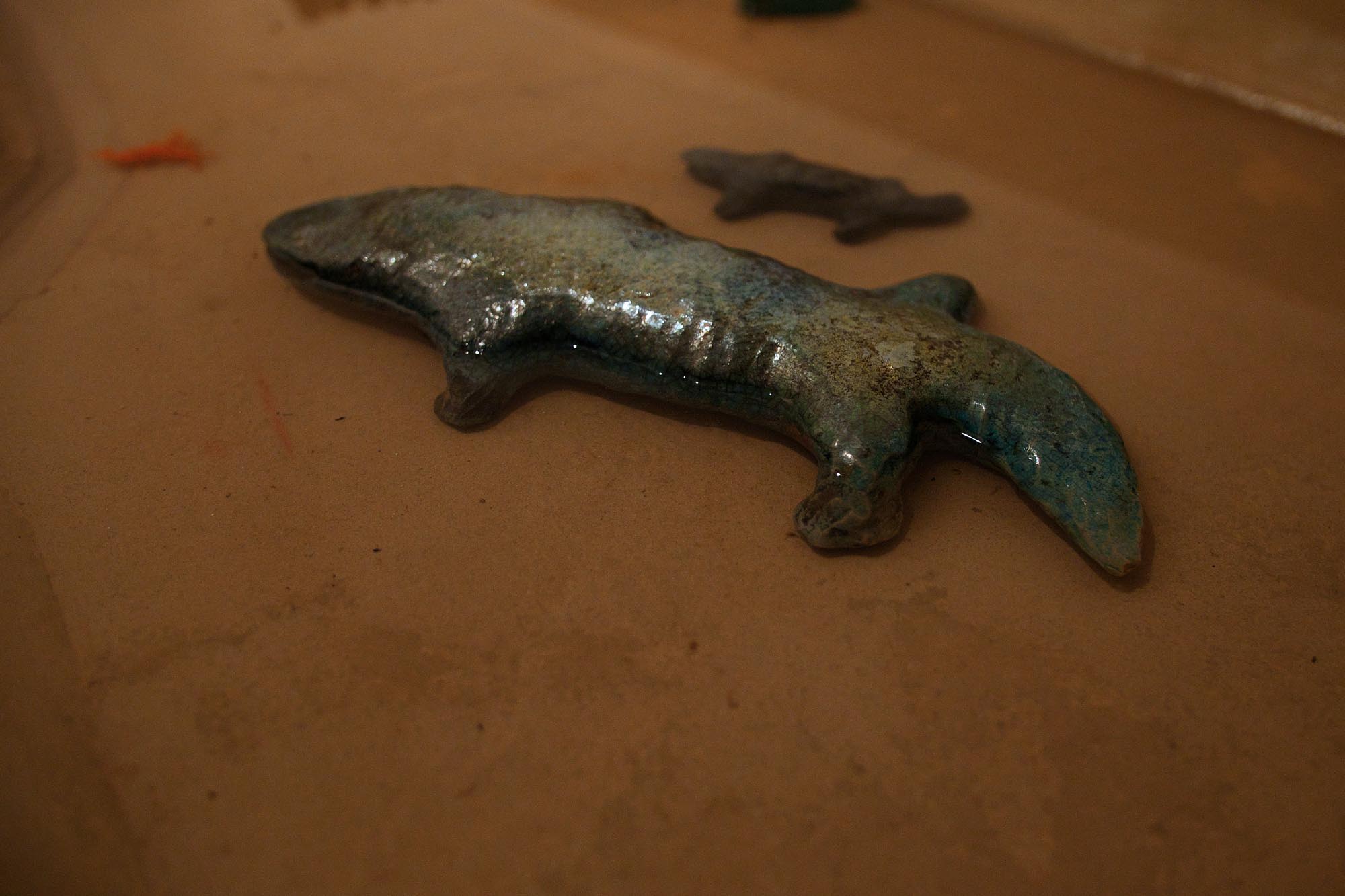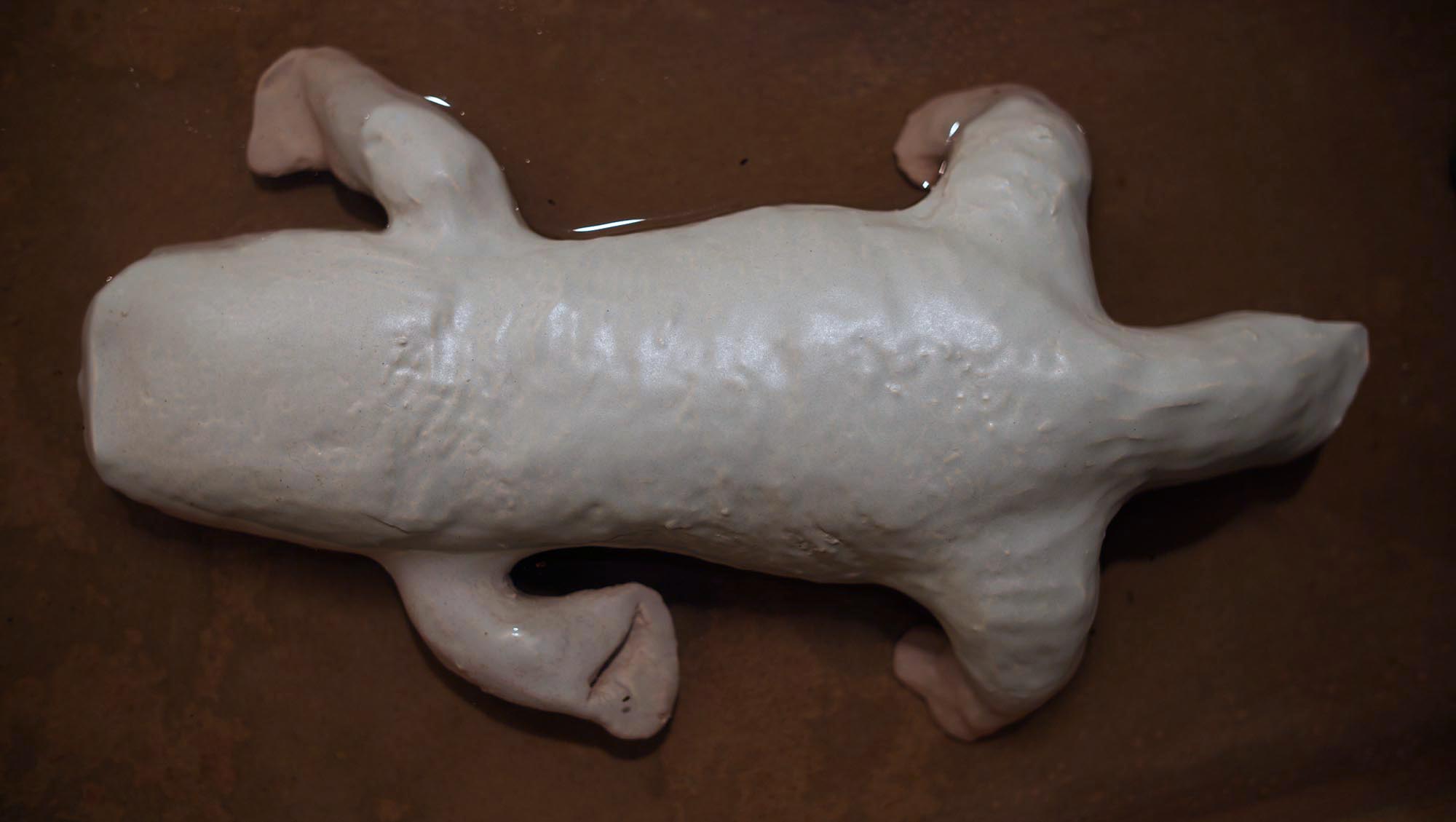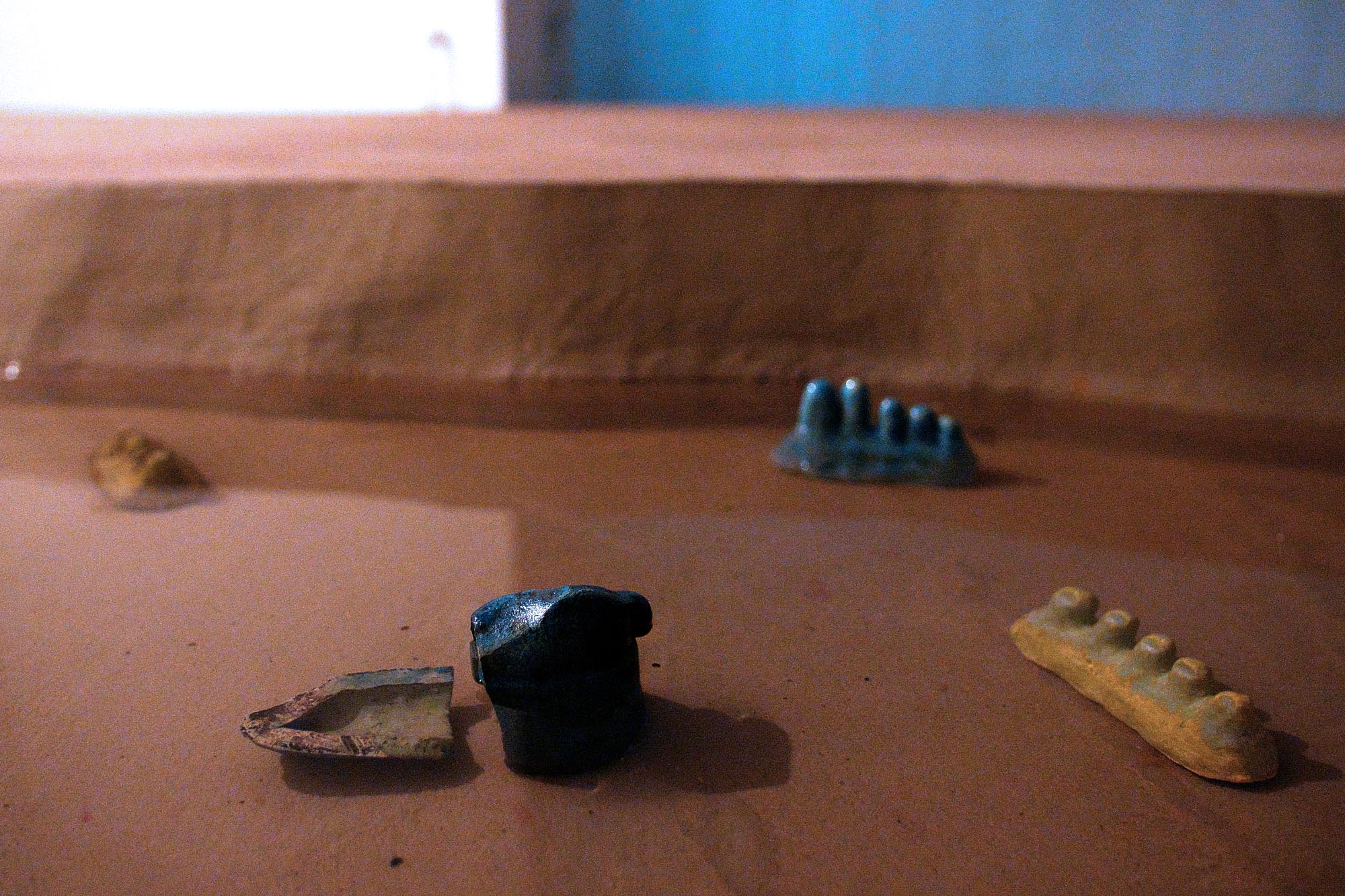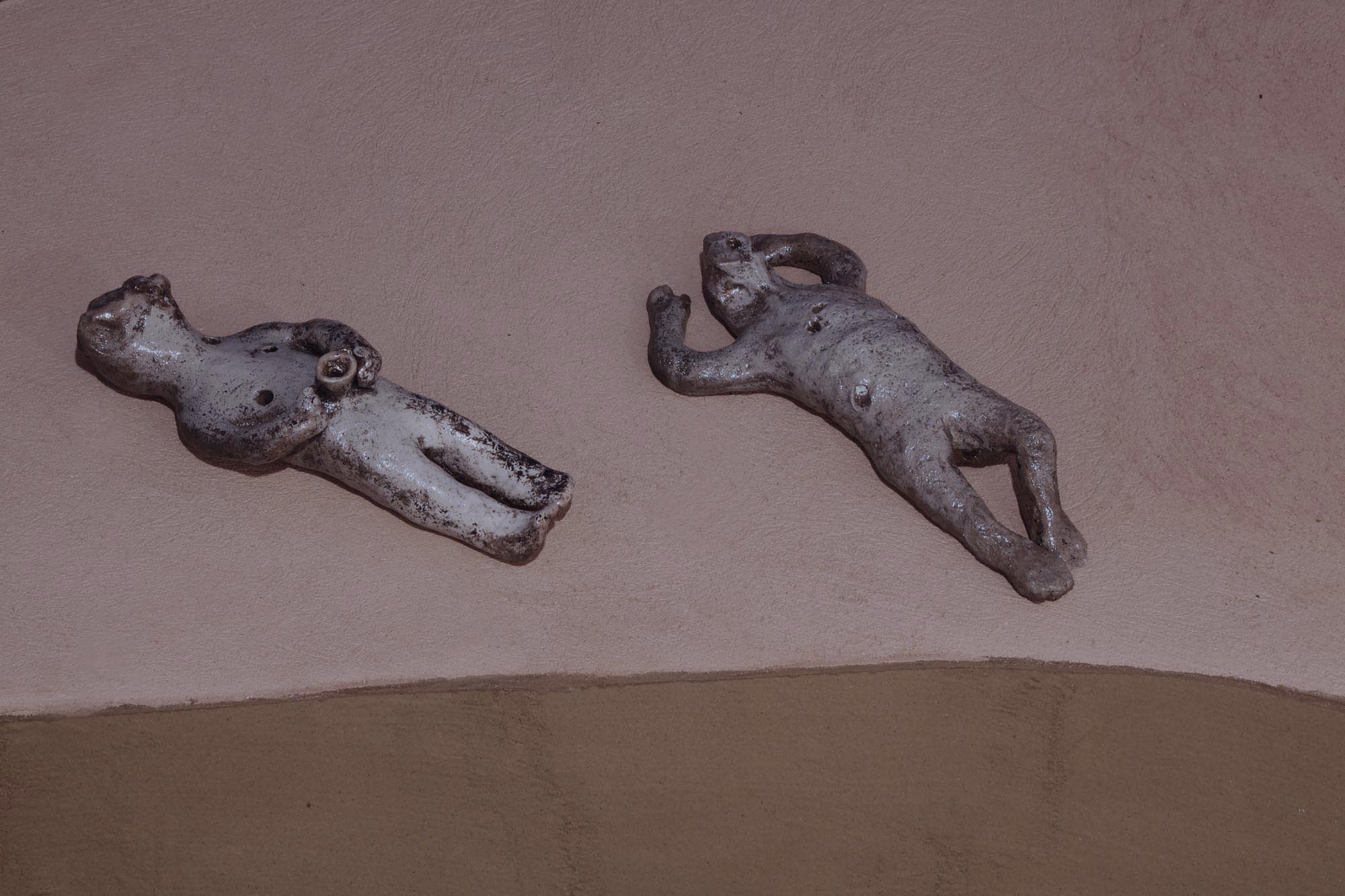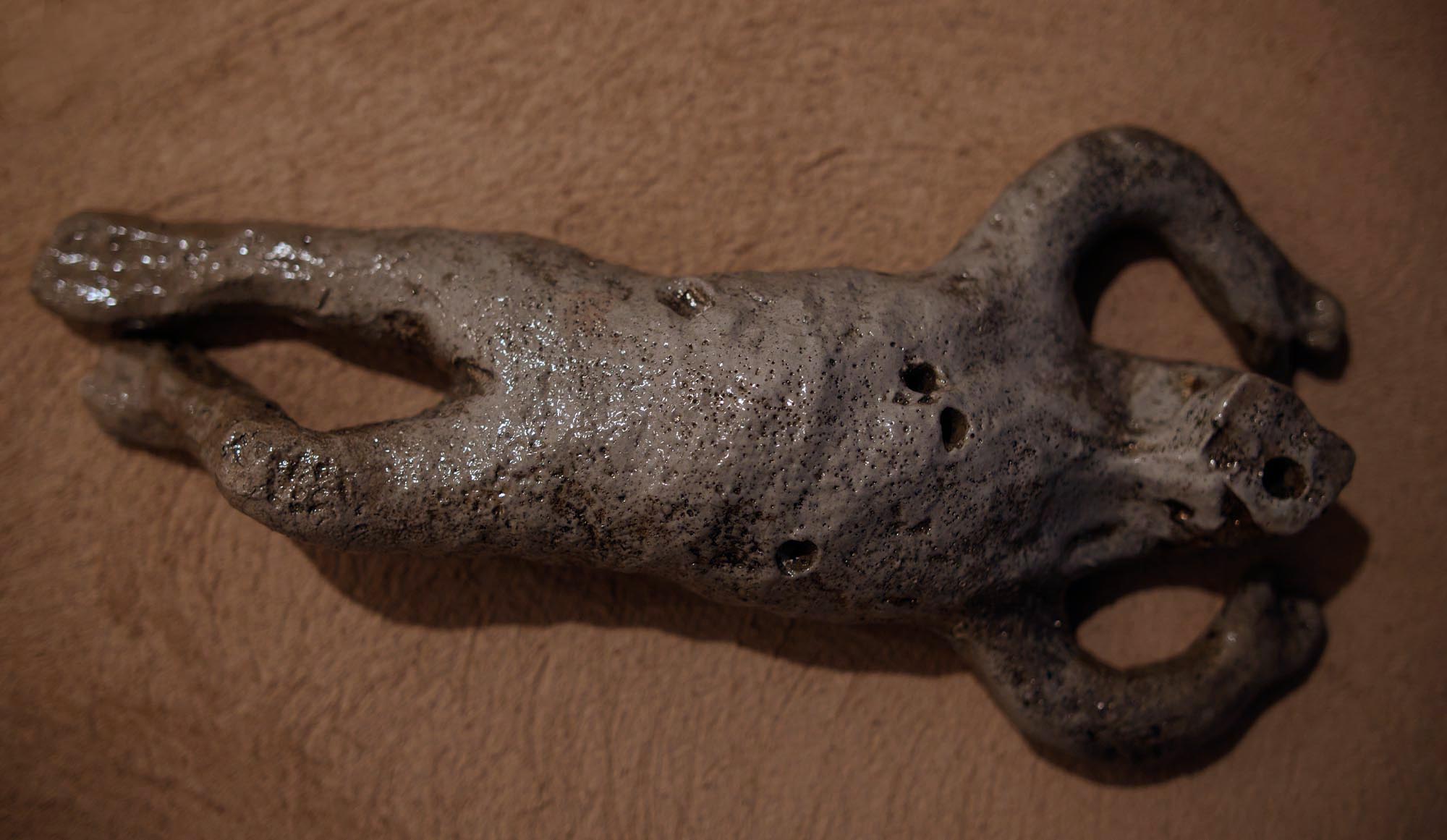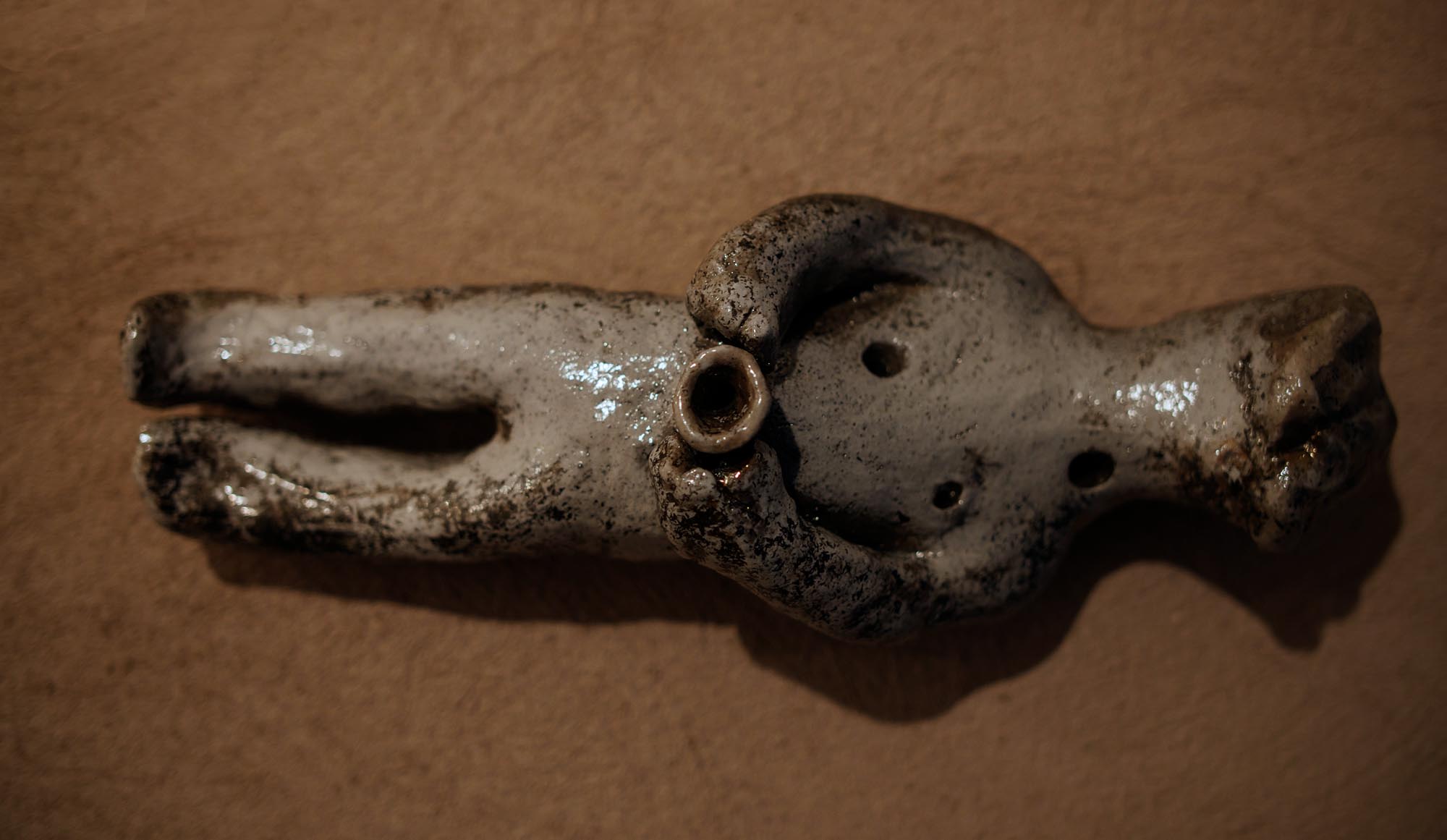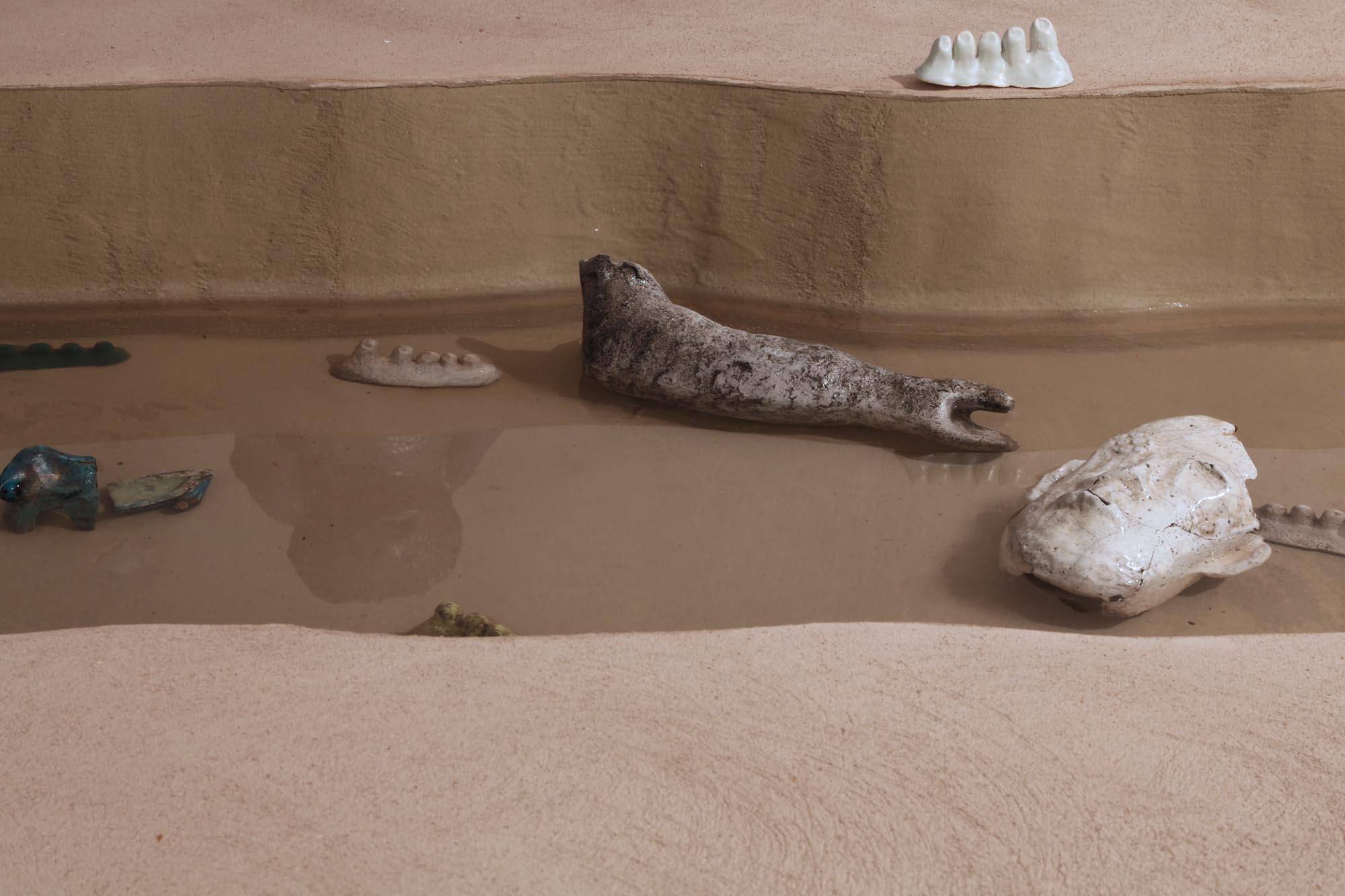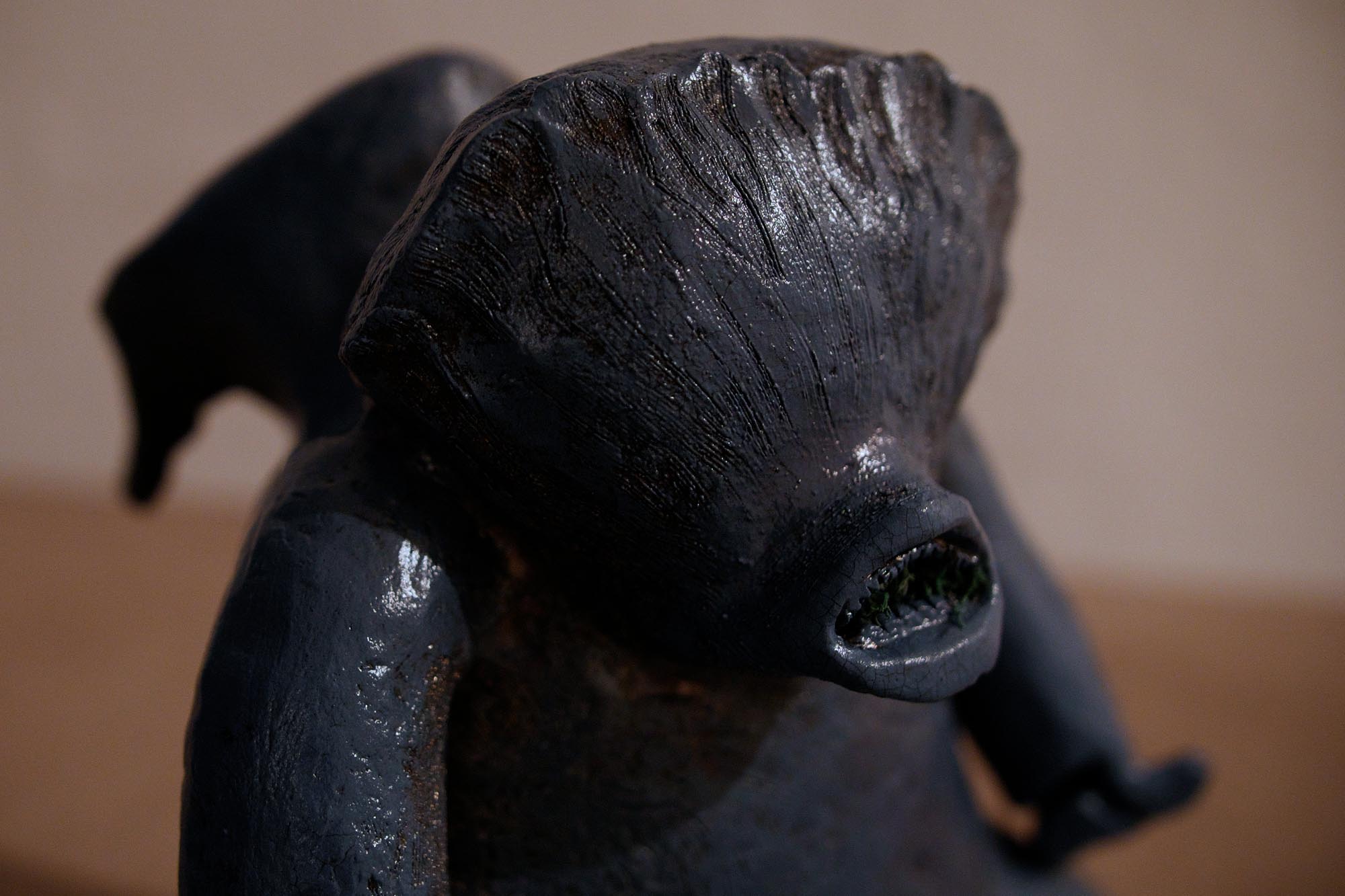The island/Insula
ceramics, wood, water, synthetic grass
2021
The island is a site specific installation that draws its inspiration from anthropological facts. A special scenography was built especially for this room, a space that resembles a river’s delta. The structure was designed so that it could hold a large amount of water. This is the last space the viewer visits and it closes the circle that started with The Special history installation. Seen in connection with each other, both installations talk about imaginary historic facts that regard the Neptune Battle. The island installation has on one side the villain, a blue ceramic figure, representing the tourist who started the conflict, the one who gave the first punch and on the other side of the room, on the island, there is the victim, another ceramic figure (peach-pink), the tourist who unwillingly stepped into the other’s shadow, thus making him to be the first who took the punch. Both of them are at the same level, and their encounter is going to start a war. The visitor knowing the narrative of this imaginary conflict can only imagine what will happen after the two of them will meet. The main idea is to represent a conflict without any explicit reference to violence, but just to the past and the future of the battle; the actual development takes place only in our imagination, perhaps as is the case with other conflicts about we only know the historical context and the traces they left, without ever having seen them happen. The two protagonists are placed on the foreshore, beneath them being the course of a river. Unlike the prior installation (The special history), that narrated one person’s private life context, this work focuses on the Battle’s history, considering that the Battle could be, metaphorically speaking, a being. The foundation of the Neptune Battle, a stupid conflict without any real stake, consists of similar conflicts, conflicts that existed since we can remember, conflicts that lead to numerous victims (humans and non-humans). In the water, under the shores of the two protagonists, lie such victims of absurd battles; they are placed with care and each of them has a special private history. Because such conflicts were so old, the visitor can see ancient creatures that resemble to crocodiles, crocodiles with their cubs, human remains, plants. The material used here, actually used in the whole show, ceramics, is not accidentally chosen, but it enhances the idea of fragility (of human life, of human psyche that can lead to uncanny actions) and it also makes the visualization of the battle’s course captivating. Can you imagine the mess if all those objects should really put the battle into action? : )
Naiana Vatavu



